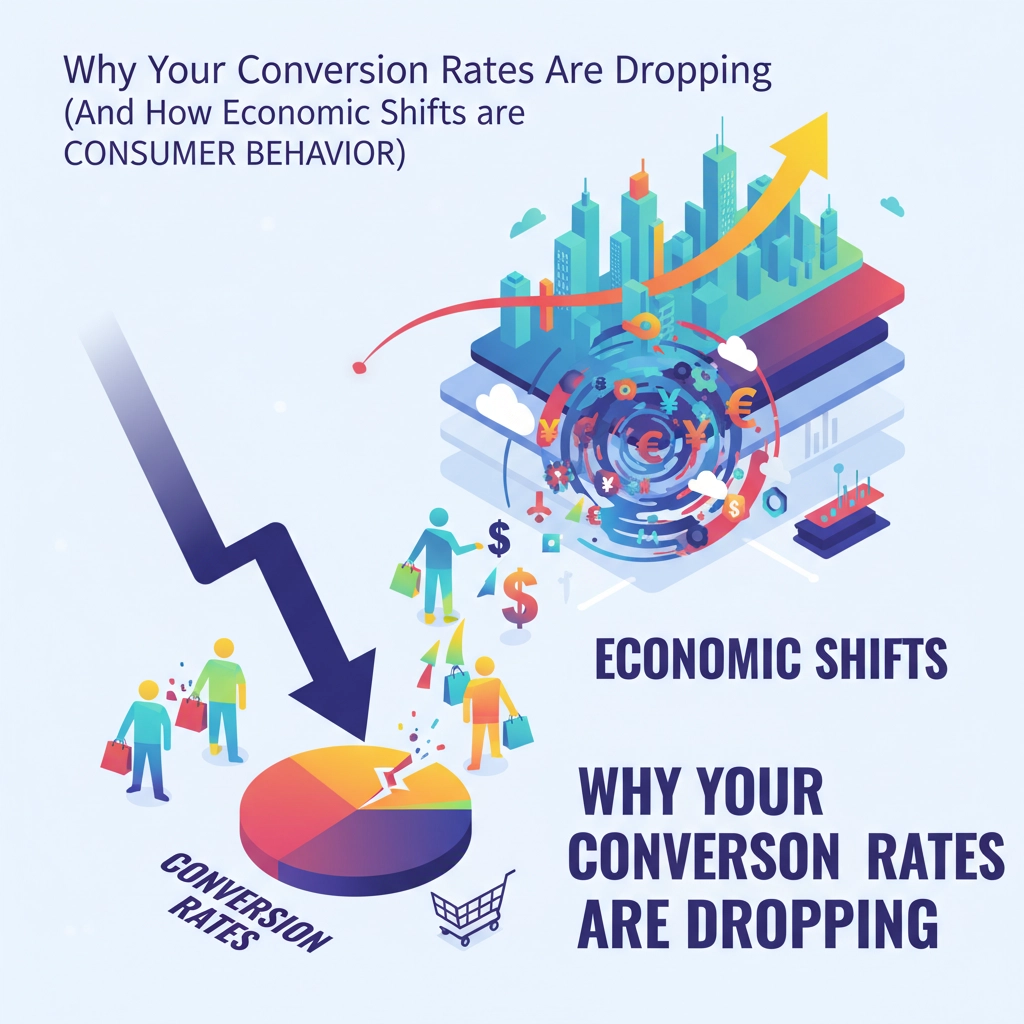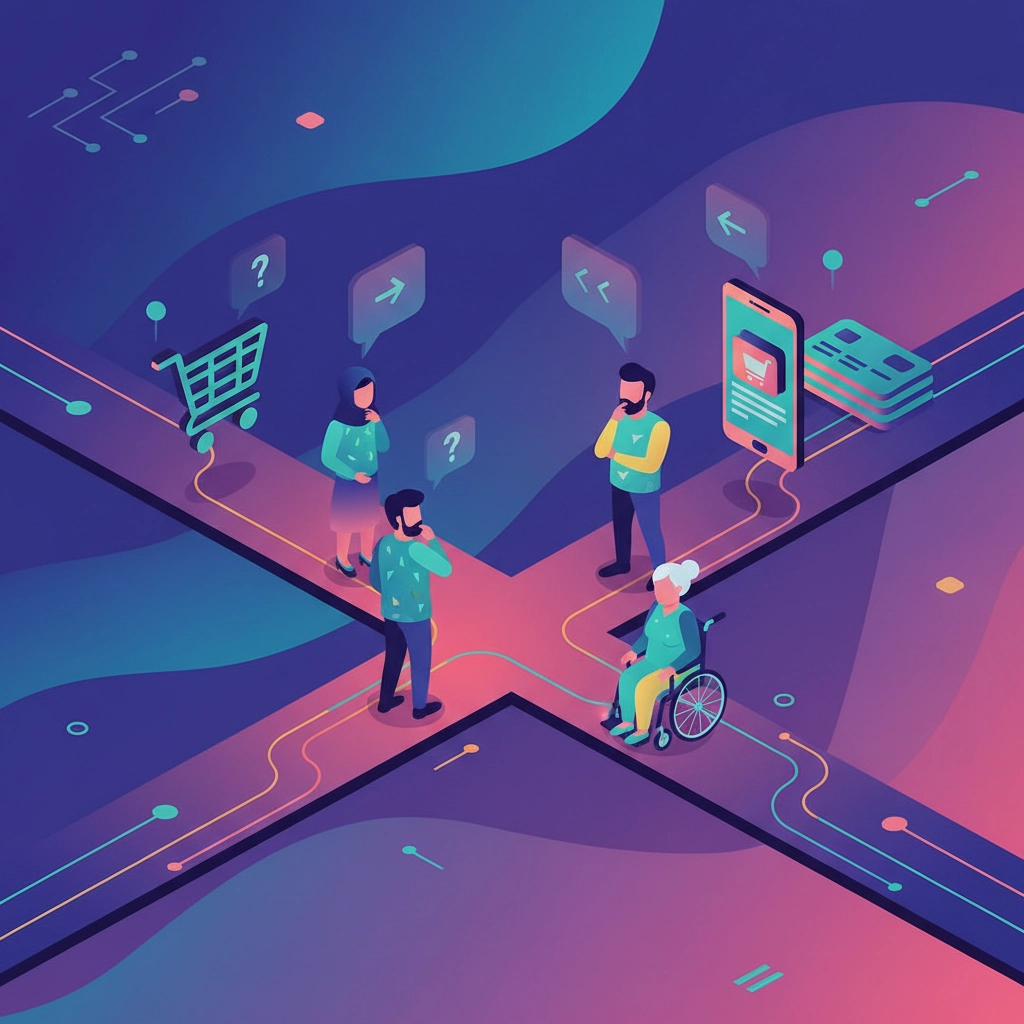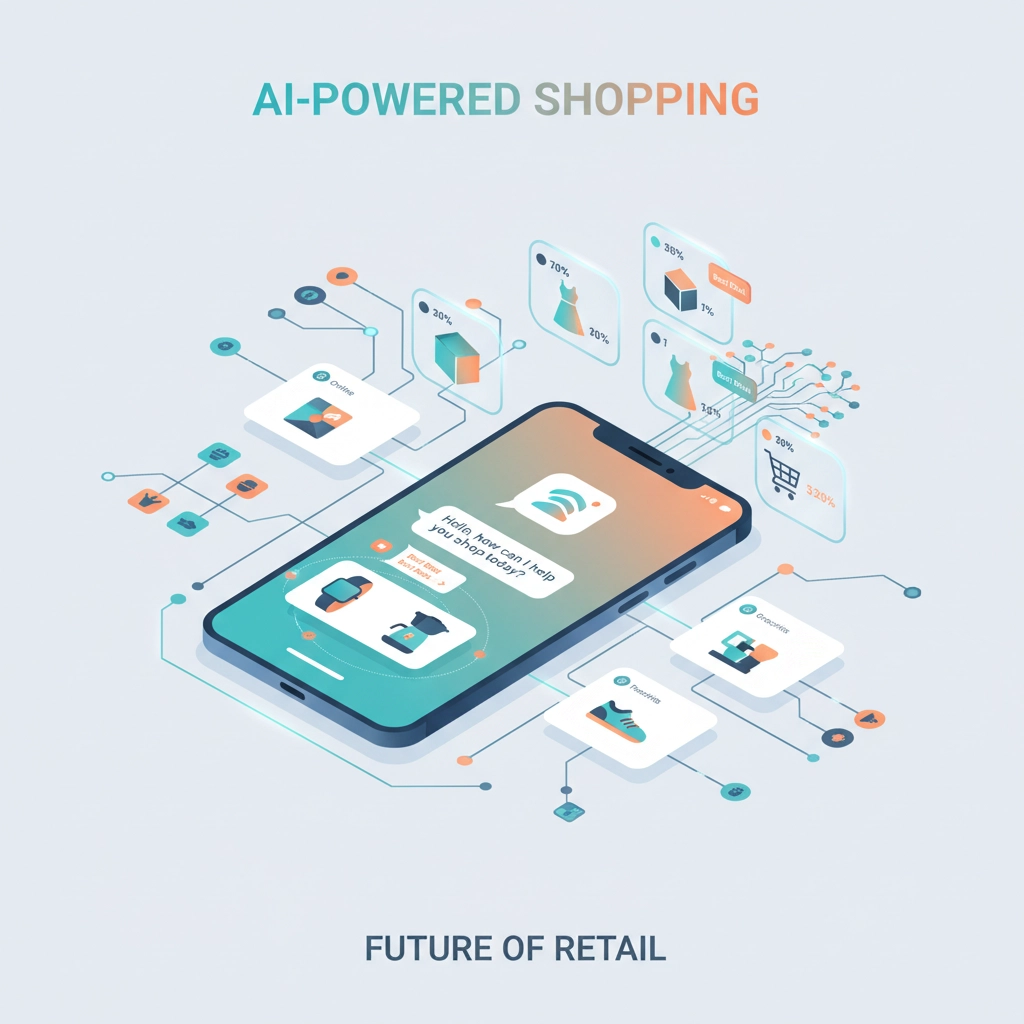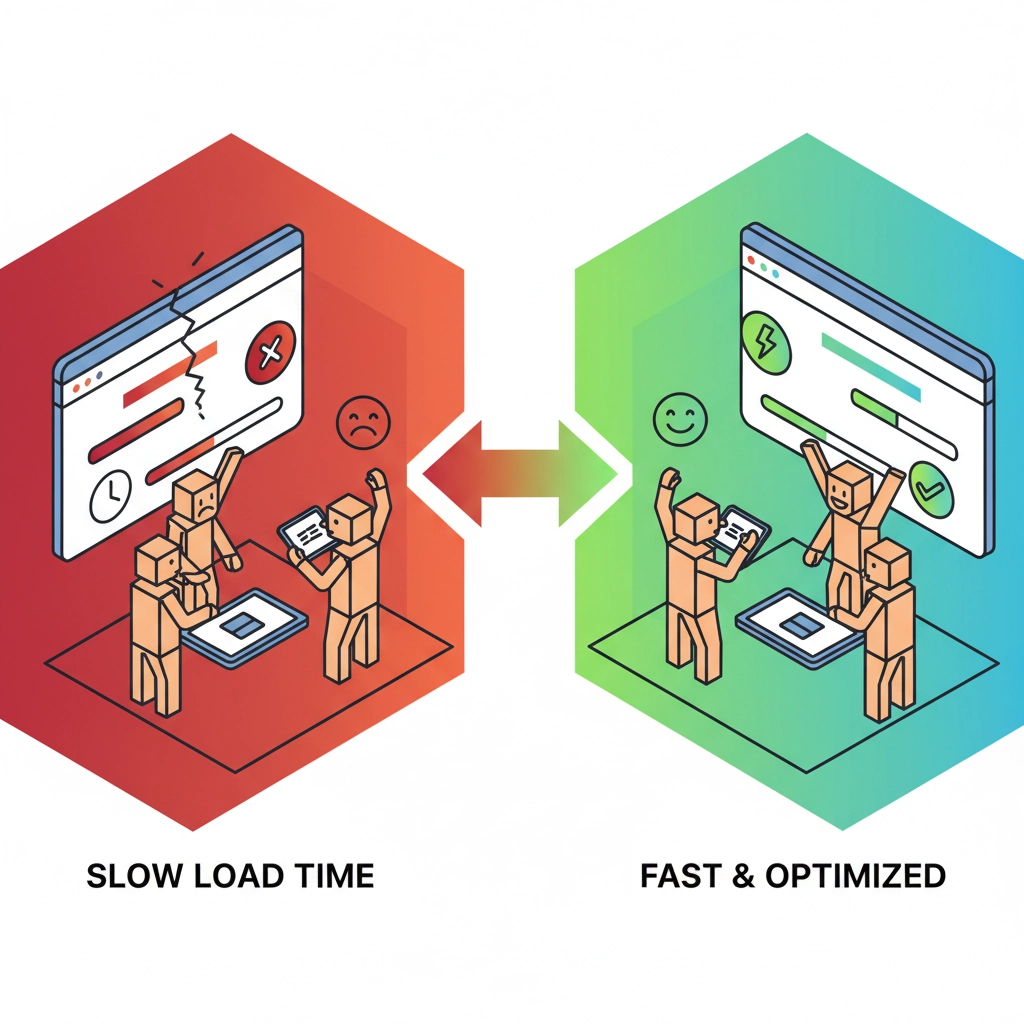Why Your Conversion Rates Are Dropping (And How Economic Shifts Are Changing Consumer Behavior)

Conversion rates across digital marketing channels are experiencing unprecedented challenges in 2025. Small businesses are witnessing their carefully optimized funnels suddenly underperform, with some seeing drops of 20-40% compared to pre-2024 levels. The culprit isn’t just your marketing strategy: it’s a fundamental shift in how consumers approach purchasing decisions amid ongoing economic uncertainty.
Understanding these changes isn’t optional anymore. Businesses that adapt their digital marketing approach to match new consumer psychology will thrive, while those clinging to outdated strategies will continue watching their conversion rates decline.
The New Economic Reality Reshaping Consumer Behavior
The economic landscape of 2025 presents unique challenges that directly impact how consumers interact with digital marketing. Persistent inflation concerns, combined with market volatility and employment uncertainty, have created a cautious consumer base that approaches every purchase decision with heightened scrutiny.
Research indicates that 55% of consumers are actively cutting back on discretionary spending, with 40% of US consumers focusing exclusively on essential purchases to maximize their savings. This isn’t temporary belt-tightening: it represents a fundamental behavioral shift that affects conversion rates across all industries, from luxury goods to everyday services.
The psychological impact extends beyond immediate spending cuts. Consumers now conduct significantly more research before making purchases, extending buying cycles and creating multiple touchpoints before conversion. They’re comparison shopping more aggressively, reading reviews more thoroughly, and seeking social proof before committing to any expenditure.

How AI Shopping Tools Are Changing Purchase Behavior
The integration of AI-powered shopping assistants and comparison tools has revolutionized how consumers evaluate products and services. ChatGPT, Google’s AI Overviews, and specialized shopping AI tools now provide instant price comparisons, feature analyses, and alternative recommendations that previously required hours of manual research.
This technological shift means consumers arrive at your website already armed with extensive knowledge about competitors, pricing, and alternatives. They’re no longer browsing to learn: they’re browsing to validate decisions they’ve already partially made through AI assistance.
The result is a more informed but paradoxically more indecisive consumer base. AI tools present so many options and considerations that decision fatigue becomes a significant conversion barrier. Visitors may engage deeply with your content but leave without converting because they’ve been presented with too many alternatives to evaluate.
Technical Performance Issues Compound Economic Pressure
Website performance issues that might have been overlooked during prosperous economic periods now become conversion killers. When consumers are cautious about spending, any friction in the user experience provides an excuse to abandon the purchase.
Research shows that 70% of consumers report slow website loading times negatively affect their willingness to buy. In today’s economic climate, this percentage likely increases as consumers use technical issues as justification for delaying or avoiding purchases altogether.
Common technical issues destroying conversion rates include:
- Slow page load times exceeding 3 seconds
- Broken checkout processes with error messages
- Payment gateway failures or limited payment options
- Non-responsive design elements on mobile devices
- Complex forms requiring excessive information
- Intrusive pop-ups disrupting the user experience
These technical barriers combine with economic hesitancy to create a perfect storm for conversion rate decline.
The Quality vs. Quantity Traffic Challenge
One counterintuitive finding reveals that increased traffic doesn’t necessarily indicate improved performance. 54% of ecommerce sites experiencing conversion rate drops also saw increased bounce rates, suggesting that traffic quality matters significantly more than volume.
Many businesses respond to declining conversions by increasing advertising spend to drive more traffic. However, this approach often backfires by attracting low-intent visitors who contribute to impressive traffic statistics but never convert. The economic environment has made high-intent traffic more valuable and harder to capture.

Industry-Specific Impacts of Economic Shifts
Different industries experience varying degrees of conversion rate impact based on their position in the consumer priority hierarchy:
Discretionary Spending Categories (Entertainment, luxury goods, non-essential services) face the most severe challenges, with conversion rates declining 30-50% as consumers eliminate non-essential purchases entirely.
Essential Services (Healthcare, legal services, home repairs) maintain more stable conversion rates but experience longer sales cycles as consumers shop more aggressively for the best value.
B2B Services face extended decision-making processes as companies implement stricter approval processes and require additional stakeholder input before committing to new vendors or services.
Adapting Your Digital Marketing Strategy for 2025
Successful businesses are implementing specific strategies to maintain conversion rates despite economic headwinds:
1. Enhanced Value Communication
Your messaging must immediately communicate value and justify the expenditure. This means leading with clear benefits, offering transparent pricing, and addressing cost concerns directly in your marketing materials.
2. Extended Nurture Sequences
Accept that buying cycles are longer and implement comprehensive email sequences that provide ongoing value while maintaining engagement. Consider creating educational content that helps prospects understand the long-term benefits of your solution.
3. Social Proof Amplification
Economic uncertainty makes consumers seek validation from peers before purchasing. Prominently display customer testimonials, case studies, and reviews throughout your conversion funnel. Consider implementing real-time social proof notifications showing recent purchases or sign-ups.
4. Flexible Pricing Options
Introduce payment plans, trials, or tiered pricing options that reduce the initial financial commitment. Even B2B services can benefit from phased implementation approaches that spread costs over time.

Optimizing for the New Consumer Psychology
Understanding the psychological factors driving consumer behavior changes enables more effective optimization:
Decision Fatigue Management: Reduce the number of choices presented at each stage of your funnel. Use guided selling approaches that recommend specific solutions based on customer inputs rather than overwhelming visitors with options.
Trust Signal Enhancement: Invest heavily in trust signals including security badges, professional certifications, detailed about pages, and transparent business practices. Economic uncertainty makes trust a premium commodity.
Urgency Without Pressure: Create legitimate urgency through limited-time offers or inventory scarcity without applying high-pressure sales tactics that may backfire with cautious consumers.
Measuring Success in the New Environment
Traditional conversion rate metrics may not fully capture success in this changed environment. Consider tracking:
- Average time between first visit and conversion
- Number of touchpoints before conversion
- Customer lifetime value trends
- Return visitor conversion rates
- Email engagement rates during extended nurture sequences
These metrics provide insight into how successfully you’re adapting to longer, more complex buying cycles.
Technical Optimizations for Maximum Impact
Focus technical improvements on areas that directly impact conversion hesitancy:
Page Speed Optimization: Implement aggressive caching, image optimization, and code minification to achieve sub-2-second load times across all devices.
Checkout Simplification: Reduce form fields to absolute essentials, offer guest checkout options, and implement multiple payment methods including digital wallets.
Mobile Experience Enhancement: Ensure your mobile experience matches desktop functionality, as mobile research has increased significantly during economic uncertainty.

Looking Forward: Preparing for Continued Economic Volatility
The economic factors influencing consumer behavior in 2025 aren’t temporary disruptions: they represent a new baseline for how consumers approach purchasing decisions. Businesses that adapt their digital marketing strategies to account for increased caution, extended buying cycles, and heightened value-seeking behavior will maintain competitive advantages as economic conditions eventually improve.
Success requires accepting that conversion optimization in 2025 isn’t just about tweaking landing pages or adjusting ad copy. It’s about fundamentally reimagining how you communicate value, nurture prospects, and guide them through extended decision-making processes.
The businesses thriving despite challenging conversion rate environments are those that view these changes as opportunities to build stronger, more trust-based relationships with their customers. They’re investing in long-term value creation rather than short-term conversion tactics.
Take Action to Protect Your Conversion Rates
Don’t let economic headwinds destroy your carefully built marketing systems. The strategies outlined above require immediate implementation to prevent further conversion rate decline and position your business for recovery as conditions improve.
At Digital Traffic Factory, we specialize in helping businesses adapt their digital marketing strategies to changing economic conditions and consumer behavior patterns. Our data-driven approach ensures your marketing investment delivers measurable results even in challenging environments.
Ready to stop watching your conversion rates decline and start building a marketing system that works in today’s economic reality? Contact us today at robert@digitaltrafficfactory.com or call 203-217-9496 to discuss how we can optimize your digital marketing for sustained success.
